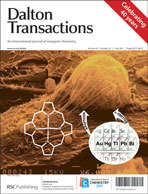A series of 2-(1-(arylimino)propyl)quinolin-8-olate half-titanocene dichlorides, Cp′TiCl2L (Cp′ = η5-C5H5 or η5-C5Me5, L = 2-(1-(2,6-R1-4-R2-phenylimino)propyl)quinolin-8-olate), was synthesized via the stoichiometric reaction of Cp′TiCl3 with the corresponding potassium 2-(1-(2,6-R1-4-R2-phenylimino)propyl)quinolin-8-olate salt. All titanium compounds were characterized by elemental analysis, 1H NMR and 13C NMR spectroscopy; the molecular structures of two representative compounds were determined by single crystal X-ray diffraction. On activation with methylaluminoxane (MAO), all half-titanocene compounds showed high activity in ethylene polymerization, and furthermore, performed with good to high activities in the co-polymerization of ethylene with either 1-hexene or 1-octene affording polyethylenes with high co-monomer incorporation. Less bulky ortho-substituents (R1) on the phenylimino groups were found to enhance the catalytic activities of their titanium compounds. In general, the titanium pro-catalysts containing η5-C5Me5 (C7–C12) exhibited higher activities than did their analogues bearing η5-C5H5 (C1–C6). Some of the resultant polyolefins were ultrahigh molecular weight polyethylene.

You have access to this article
 Please wait while we load your content...
Something went wrong. Try again?
Please wait while we load your content...
Something went wrong. Try again?


 Please wait while we load your content...
Please wait while we load your content...